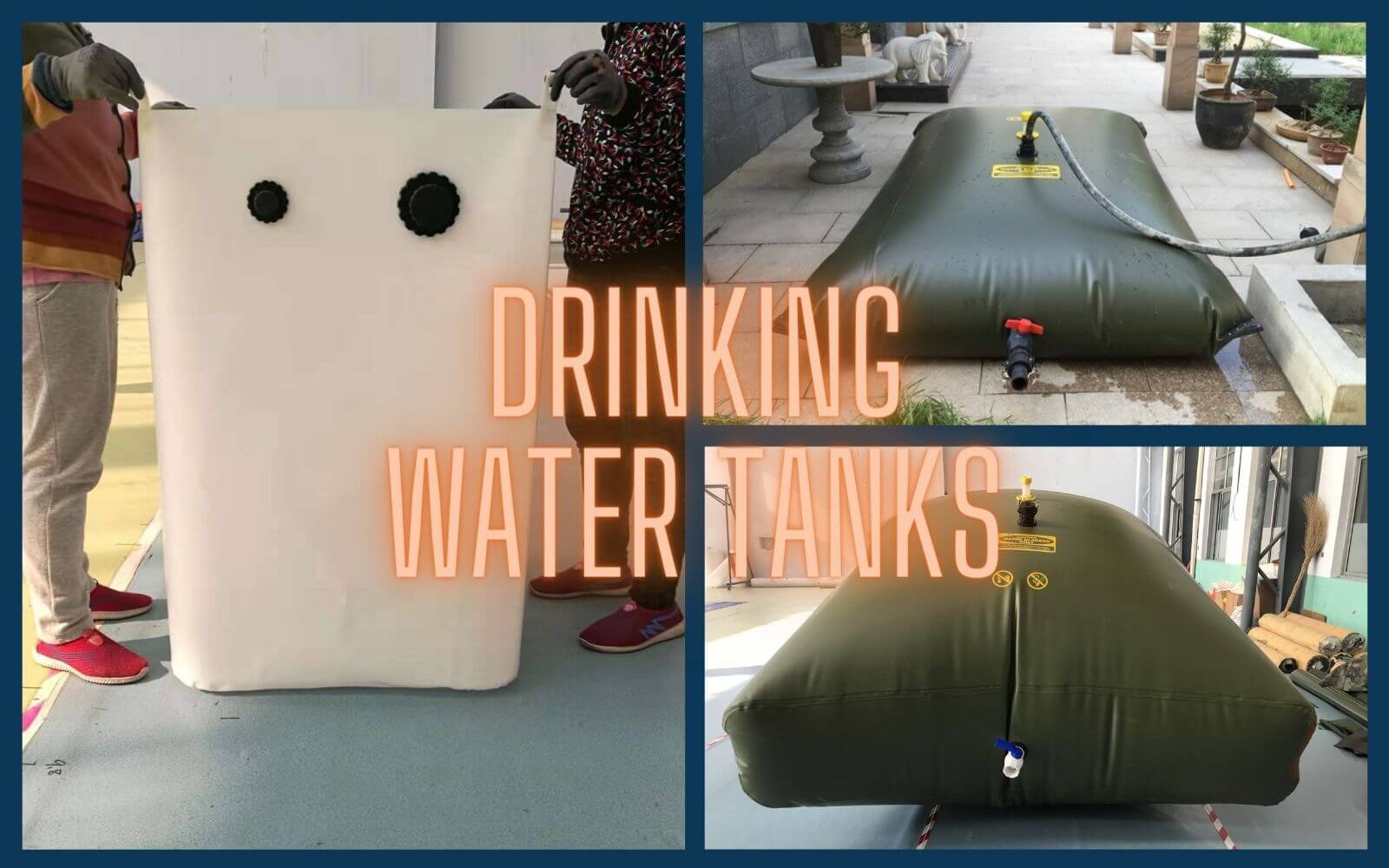Drinking water is an essential resource for human life, and having a reliable supply of clean, potable water is essential for maintaining health and hygiene.
In many situations, drinking water may not be readily available, which is where potable water tanks come in. These tanks design to store and supply drinking water, and widely use in a variety of applications. In this article, we will explore the working situations, places to use, and how to choose drinking water bladders.
Drinking water containers can use in a wide range of working situations, including:
Drinking water storage can use in emergency situations, such as natural disasters or other events that disrupt the normal supply of clean drinking water.
Drinking water bags widely use in remote locations where access to clean drinking water is limited or non-existent.
Drinking water bladders also use for temporary setups, such as construction sites or events where a temporary supply of clean drinking water is necessary.
Potable water tanks are working in a variety of places, including:
Drinking water tanks use in residential settings, such as homes or small communities where access to clean drinking water is not enough.
Drinking water basins use in commercial settings, such as hotels, restaurants, or other businesses that require a reliable supply of clean drinking water.
Drinking water bladders use in industrial settings, such as factories or plants that require large amounts of clean drinking water for manufacturing processes.
Choosing the right potable water tank depends on a variety of factors, including the required capacity, durability, and materials. Here are some important factors to consider when choosing a drinking water tank:
The capacity of the tank should be based on the amount of drinking water required for the specific application. It is important to choose a tank with the appropriate capacity to avoid running out of drinking water.
The durability of the tank is also an important consideration, as drinking water tanks must be able to withstand harsh environmental conditions and be resistant to corrosion and leaks.
Food grade water tanks use a variety of materials, including pvc, tpu, fiberglass, and steel. The choice of material will depend on factors such as cost, durability, and resistance to corrosion.
It is important to choose a potable water tank that has been certified for potable water use by a reputable certification body, such as FDA.
Drinking water tanks are an essential resource in many situations where access to clean drinking water is not enough.
They can be working in a variety of working situations, places, and applications, and choosing the right tank requires careful consideration of factors such as capacity, durability, materials, and certification. By choosing the right drinking water tank, you can ensure a reliable supply of clean drinking water for you and your community.








